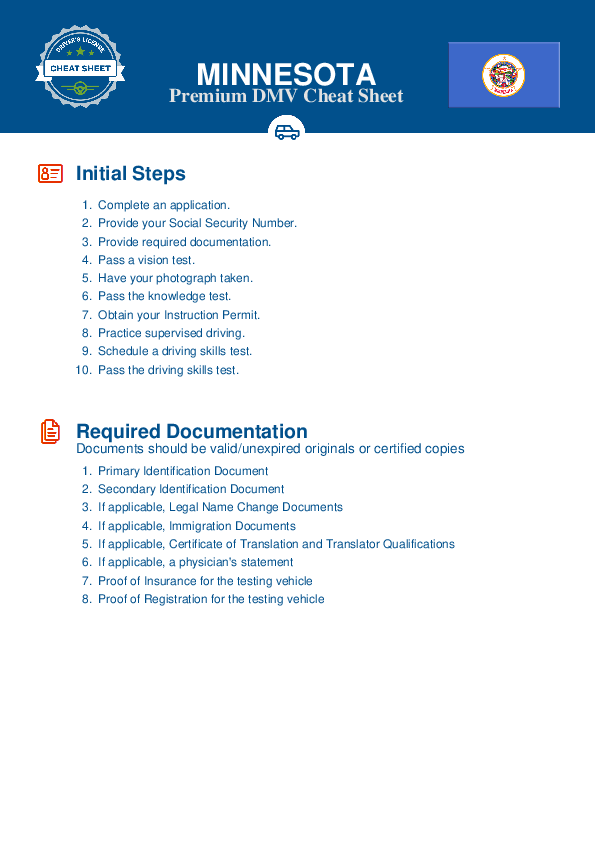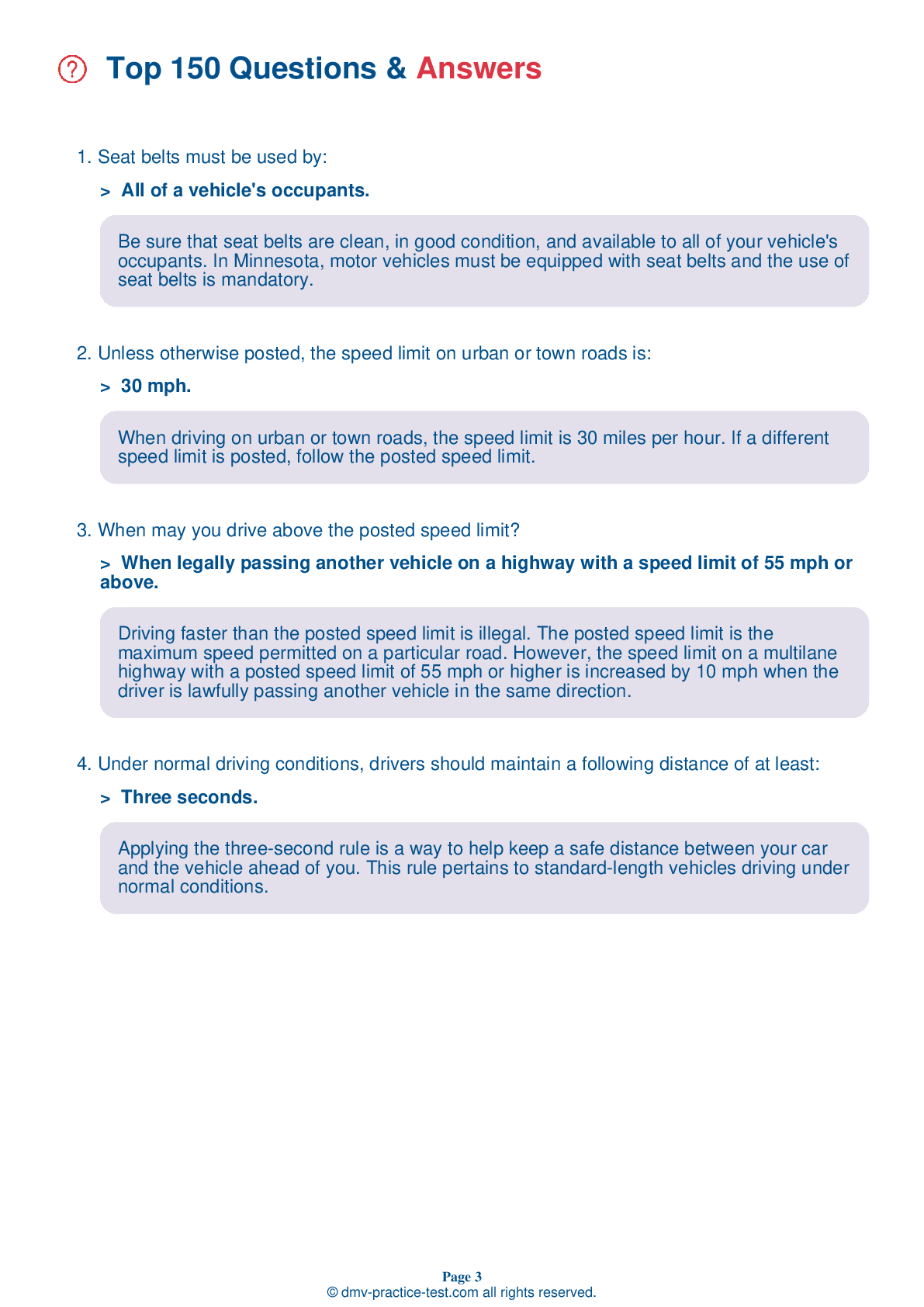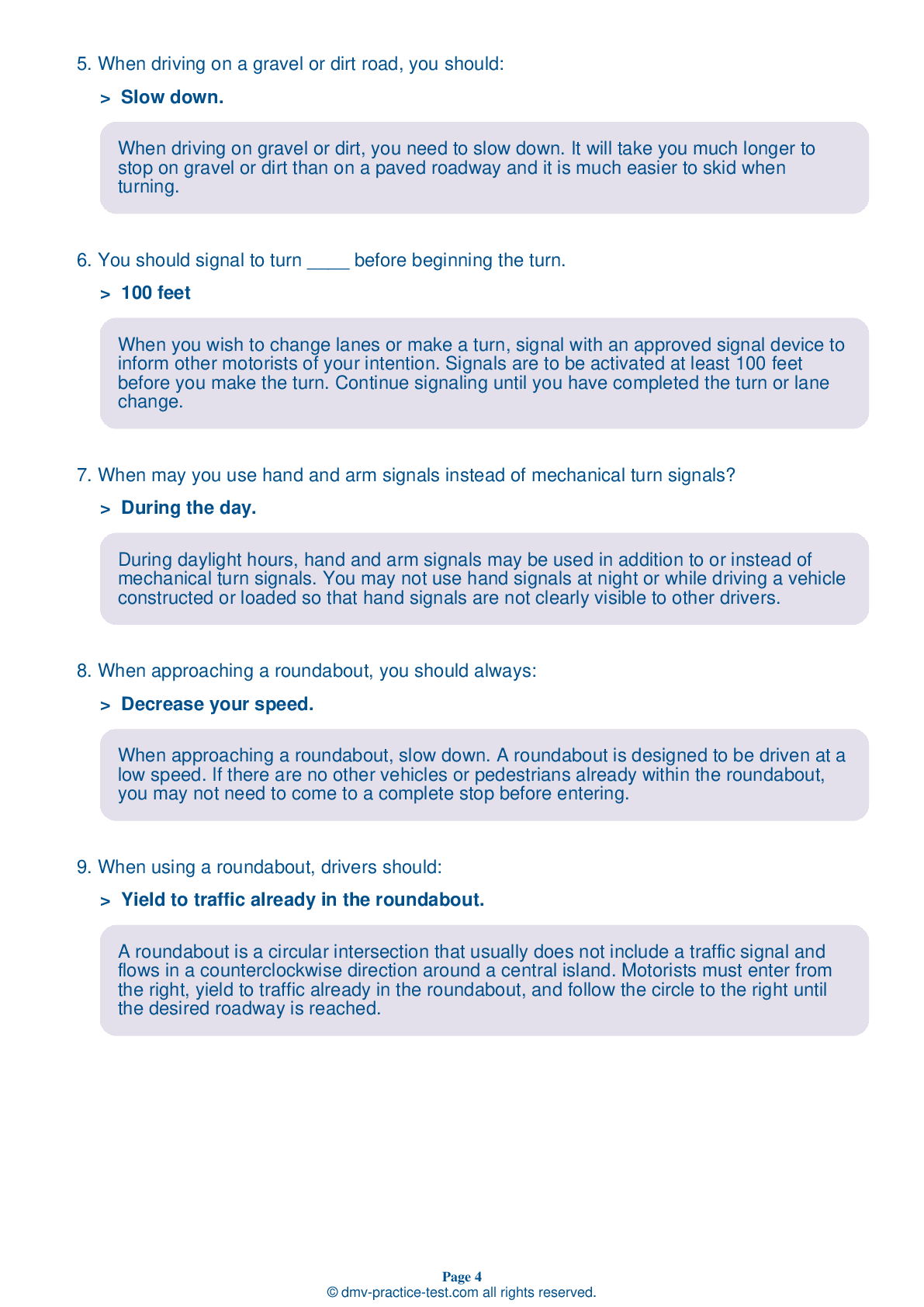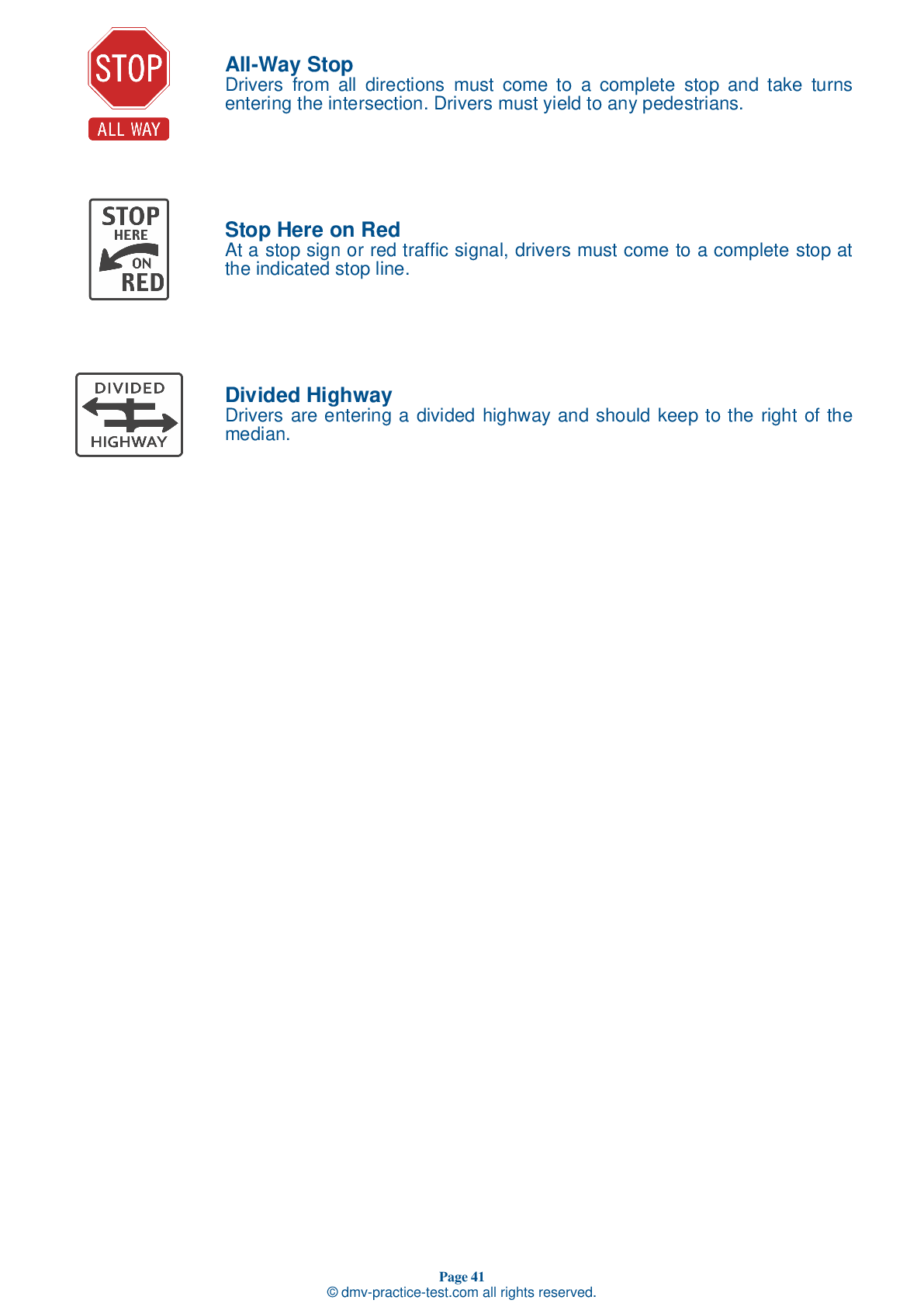FREE Minnesota DMV Practice Test #23 Page 3 of 5
The Minnesota DMV practise examinations have been updated for January 2025. It includes questions based on the Minnesota Driver Handbook's most essential traffic signals and laws for 2025. Use actual questions that are very similar (often identical!) to the DMV driving permit test and driver's licence exam to study for the DMV driving permit test and driver's licence exam.
On the practise exam, each question gets a tip and explanation to help you remember the concepts. The written component of the official Minnesota DMV test will include questions about traffic rules, traffic signs, and driving statutes, as well as knowledge from the Driver Handbook.
To obtain a passing grade, you must correctly answer 32 of the 40 questions. To help you prepare for your instruction permit or driver's licence, take our Minnesota DMV practise test.
The DMV exam is available in several languages.
Using any kind of testing assistance will result in an automatic fail, and the DMV may take additional action against your driver's licence, so stay away from it.
17 . You may not park within ____ of a fire hydrant.
Drivers may not park within 10 feet of a fire hydrant. Park where drivers can clearly see your vehicle from both directions.
18 . This sign means:
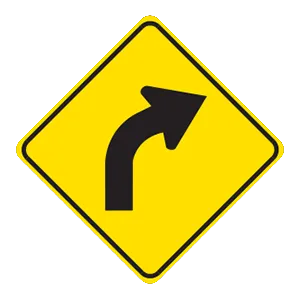
Warning signs prepare drivers for upcoming road conditions and hazards and are usually yellow with black markings. This sign alerts drivers to an upcoming curve in the road.
19 . A solid yellow line on your side of the centerline means:
A solid yellow line next to your lane means that passing is not permitted from your direction.
20 . When a funeral procession is present, ____ has the right-of-way.
Drivers, pedestrians, and bicyclists must yield the right-of-way to funeral processions. When the lead vehicle enters an intersection, the remaining vehicles in the funeral procession may follow through the intersection regardless of traffic control devices.
21 . A good defensive driver:
Even the most experienced drivers can be distracted while driving. A defensive driver looks out for the actions of other drivers and anticipates potential problems.
22 . What is the meaning of this sign?
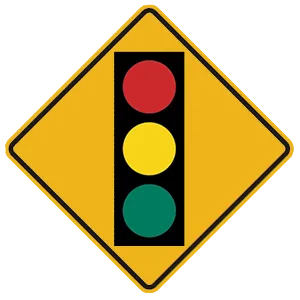
This sign indicates that there is a traffic signal at the intersection ahead.
23 . You are approaching an intersection when the traffic light changes from green to solid yellow. You should:
When approaching an intersection with a solid yellow traffic light, slow to a stop before entering the intersection, if it is safe to do so. If you can't stop safely, drive carefully through the intersection.
24 . When exiting a highway, you should slow down:
When exiting a highway, you should get into the exit lane well in advance. Do not begin to slow down until after you have moved into the exit lane.
See the exact questions that will be on the 2025 Minnesota DMV exam.
99.2% of people who use the cheat sheet pass the FIRST TIME
LT gives us an insight on how the cheat sheet provided her with all the study questions she needed before taking her test.
Joe initially studied with the handbook and failed his test, he eventually found us online, studied and pass his test the first time around.
